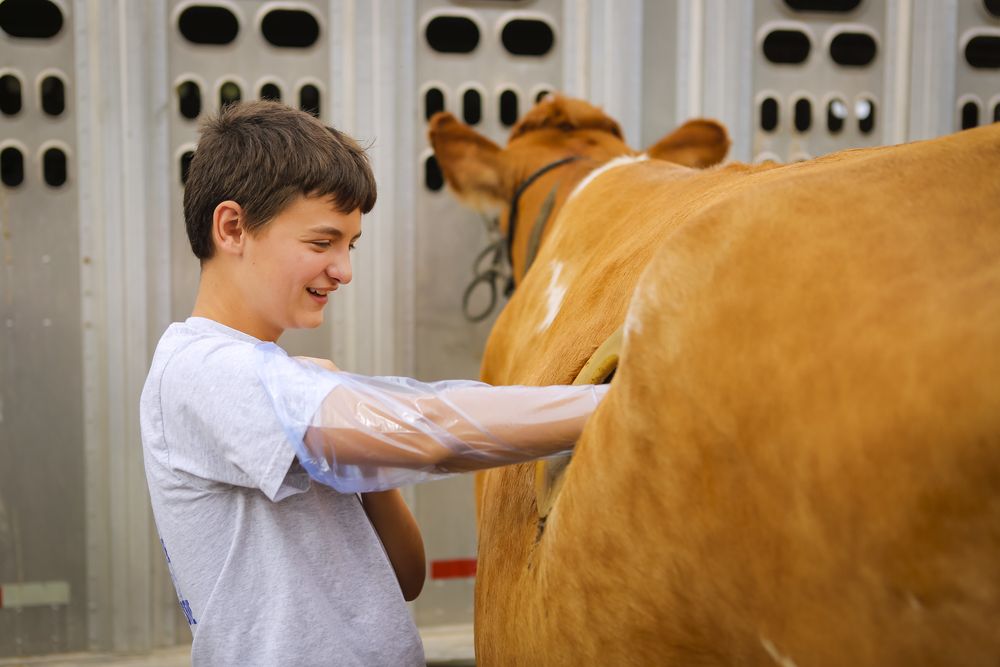Imagine being able to look inside a cow. Call it curiosity, or the craving to reveal all of the world’s truths, but the cannulated cow is man’s experiment to discover what goes on in the digestive systems of a bovine, and how best its milk output can be increased to its maximum potential. In 1928, Arthur Frederick Schalk and RS Amadon of North Dakota Agricultural College became the first men to eagerly peep inside a cow with a porthole studded on its body. Since then, scientists and agriculturalists across the world have furthered the controversial practice to improve the health of cattle, reduce mortality rates and increase the output of milk. Whatever the reason, we’re almost a century ahead and the practice continues to remain highly moot.

A cannulated cow. Photo: Modern Farmer
What is a Cannulated Cow?
Within a cow live millions of independent microorganisms that work day and night to fuel its digestive system. Of its four stomachs, a cow’s rumen is where this magic happens—cellulose from plants is converted into energy in the 20-gallon pit. The symbiotic relationship allows the cow to thrive despite eating whatever it does, and lets the microbes exist in exchange for their positive effect on the mammal’s gut health. Now imagine if a cow got sick and lost the homeostasis that allowed good bacteria to nurse it back to health.
In a cannulated cow, a porthole is inserted into the side of its body to obtain rumen bugs for treatment of ill cows. A cannula or a sturdy tube is inserted into the opening, and is used to obtain the microbes from the healthy cow’s body. The rumen fluid and microbes are then transferred to the body of the ill cow. This is called transfaunation. A healthy cannulated cow thus becomes a donor among cattle, serving sick cows and even goats and lambs with healthy bacteria for their recovery. The surgical insertion is also used to study the bodily processes of bovines, put food matter into their stomach as well as get it out for analyses.

Getting to know the inside of the ruminant. Photo: Mizzou CAFNR/Flickr
The Risk of Surgery
The entire procedure is performed under anesthesia, and the cow heals in about four to six weeks. The rumen is stitched to the lining of the body, and this fistulation allows researchers to examine the contents of the stomach as well as study the digestive processes of the cow. Various animal activists have opposed the farming practice across countries. But its propagators suggest that the process has helped many cows live healthy lives as long as up to 12 to 15 years. The duration of their own life increases, and transfaunation helps revive other dying and diseased animals. The entering of external bacteria into the animal’s body during surgery is a commonly placed concern, but scientific acumen has discovered that the hoards of good bacteria flourishing inside the bovine’s body check any harmful microbes from breeding inside. These cows are often the healthiest among the herd.

Photo: Wikimedia
Today, the practice is thriving across the world from Europe to Australia. In France, Europe’s second largest milk producer, cows’ stomachs are being studied to reduce the effect of greenhouse gasses and improve food production. The aim of the studies remains to discover the most suitable eating patterns that promote high milk production in bovines. However, this does not take away from the jarring presence of laboratory rumina for modern experimentation. These faux rumina are made of plastic, but imitate the process of fermentation in a real cow. Why cut open an animal when you can get the desired results from a plastic model? The answer seems to lie in the resultant depletion of methane emissions in livestock farming. The cows that were cannulated or fistulated also proved to become healthier and live longer.

Photo: devra/Flickr
In a world where everything from eggs to leather is being genetically manufactured, and narratives around what we eat are changing by the second, the question of the cannulated cow remains perched in a grey area. The intrigue of the matter, of course, notwithstanding.
References
# The Lantern
# BBC
# Modern Farmer
# Rumen Cannulation: Procedure and Use of a Cannulated Bovine












Comments
Post a Comment